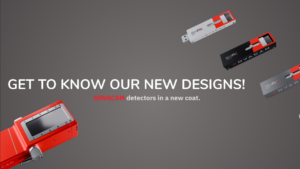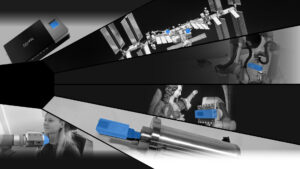ADVACAM will help answer one of the most important questions of space travel: “How to protect crews and equipment from the negative effects of cosmic rays?”


NASA will use the results of the research for the Artemis program, a mission planned for 2024 when, for the first time in history, a woman will fly to the Moon. Artemis will also be NASA’s first crewed flight to the Moon since 1972. Radiation research will be provided for NASA by the US State University of Louisiana (LSU) in cooperation with ADVACAM. The Intuitive Machines Nova-C lunar landing module, which will carry the ADVACAM detector, will be launched from the SpaceX Falcon 9 rocket in the first quarter of 2022. The module will spend two weeks on the surface of the Moon before succumbing to the lunar night.
“We have models and predictions for human health risk on the Moon, but we don’t yet have actual measurements of the radiation composition on the lunar surface. Now that we’ll get real data, we can use it to validate our estimations and increase the safety of future space travel.” says assistant professor Jeffery Chancellor of LSU.


Data will be collected by highly sophisticated ADVACAM MiniPIX TPX3 miniature cameras recoding traces of individual particles of space radiation.
ADVACAM’s state-of-the-art detectors, which have undergone NASA’s highly rigorous certification process for use in extreme space conditions, will face a new challenge – they will not fly inside a spaceship like on the ISS, but will be located on the module’s external arm. “Our detector will be exposed to huge temperature cycles with fast transitions from shade to direct sunlight. Temperature differences will be more than a hundred degrees Celsius. The detector has to be robust but it has to remain sensitive at the same time.” explains Jan Jakůbek, ADVACAM CSO.


The module, which will orbit the Earth several times and then head for the Moon, will collect data throughout the flight. “Our development team minimised the detector size, weight and power consumption to make it ideal for use in space.” All the data we measure in space will be sent to Earth. ”This mission is unique because ADVACAM gets a completely unlimited bandwidth for data transfer. This is not common at all.” adds Jakůbek.
“ADVACAM’s philosophy is continuous innovation and the search for solutions to yet unsolved imaging tasks. The core of the company is a strong scientific team that operates fully commercially. Today we sell our detectors globally to various industries. We believe that the data and experience from this mission will move us further again.” says Jan Sohar, ADVACAM CEO.
The MiniPIX TPX3 detector, which will fly to the Moon, is based on ADVACAM’s long-term cooperation with the Institute of Technical and Experimental Physics of the Czech Technical University and the international Medipix2 and Medipix3 collaborations which are coordinated at CERN. It builds on more than two decades of development of the sophisticated Medipix and Timepix family of chips. This technology has also been adapted for use in space in collaboration with the European Space Agency(ESA). The development of the detector was supported by a grant from the Czech Ministry of Industry and Trade within the Rademet project.


